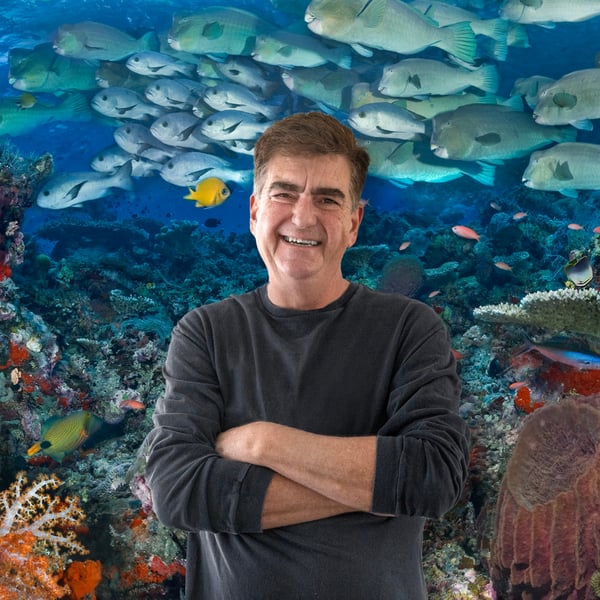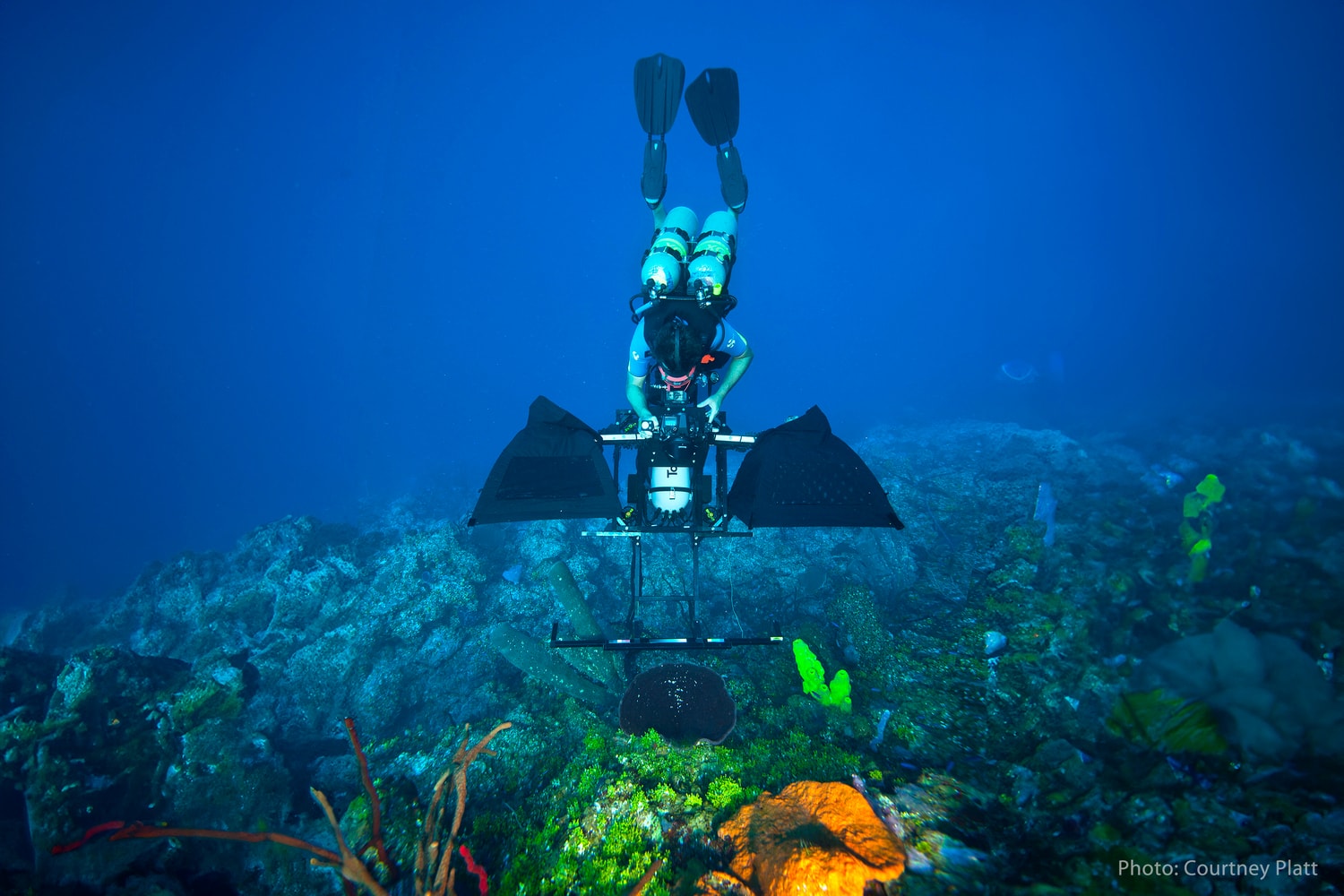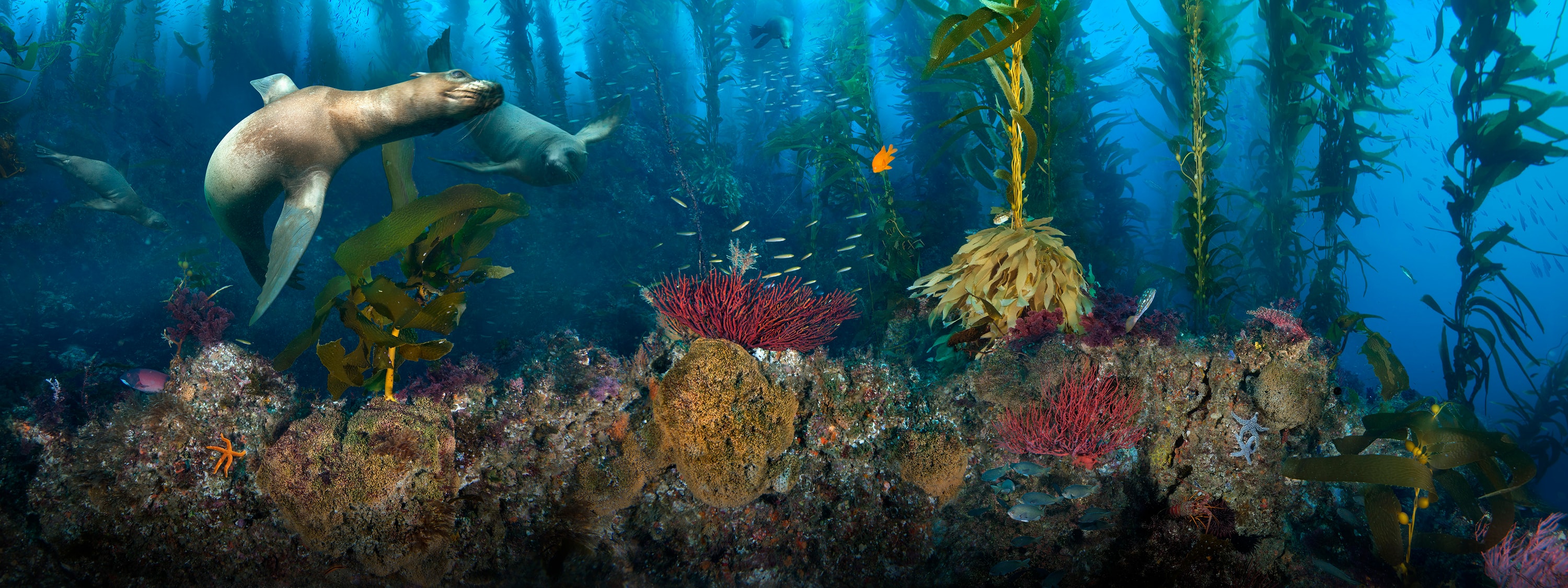
Jim Hellemn
San Diego, California“Coral Reefs are among the most colorful places on Earth, yet sadly,
you can’t easily see one, even if you’re right there.”
Underwater imaging specialist and digital artist Jim Hellemn has spent a career bringing the spectacular colors of coral reefs into your home. Using specialized lighting and hundreds of photographs to complete each image, he has spent more than twenty years capturing the stunning beauty of coral reefs around the world. An important aspect of Hellemn’s work is public awareness and ocean conservation. Jim’s images offer a unique way to appreciate a part of our environment that very few people get to experience. “As more people make the connection with the ocean as an important part of their own environment”, Hellemn says, “my hope is that they will instinctively want to protect it.” His work has appeared in National Geographic magazine, the American Museum of Natural History and is featured in several public attractions.
Jim Hellemn has been working on ocean imaging since the early 1990s, when he was part of a design team developing a high technology underwater camera system for the Navy. Using blue-green lasers matched to the color of sea water, the team was able to create detailed images of the ocean bottom through 50-100 feet of water. During the following years, Jim developed ways to create mosaics of the laser data and before long came up with the idea of creating a digital mosaic of close-up underwater photography as a way to visualize an entire reef. “When you back up enough to take a landscape shot underwater, everything turns blue and fuzzy because water absorbs all the red and yellow light and obscures details”, Jim explains. To solve the problem, Jim developed his own equipment and methods, using computers to stitch multiple images together and create a seamless panorama.
In 2000, Jim created his first gigapixel image “Great Wall West”, in a three year project to display a life-size coral reef indoors. The 1,700 megapixel photograph of Bloody Bay Wall (”Portrait of a Coral Reef”, National Geographic Magazine Oct 2001) was the first “stitched” image ever created and, at the time, was one of the highest resolution digital images ever produced. Working from film, he developed a methodology for seamlessly blending images together with a high degree of accuracy. His images are still created this way, with each frame corrected and manually stitched together in a process that cannot be rushed or automated. Some images take weeks, or even months to produce. As a result of stitching so many images together, Jim’s images are able to capture the vivid colors and details of an entire reef, and can be reproduced many times larger than a typical photograph.
In 2006, Jim was commissioned to produce a coral reef image large enough to cover the side of a five storey building in Grand Cayman. The resulting image was rendered in tiny, hand-cut Italian glass tiles, and now covers an inside wall of the Camana Bay Observation Tower, where visitors can walk up a coral reef on their way to the observation deck.
INSTALLATIONS
Camana Bay Observation Tower Grand Cayman, Cayman Islands Opened October 2009
A high resolution coral reef image for the Camana Bay Observation Tower, a five story public attraction in Grand Cayman, where visitors can now “walk” up a coral reef. The final image on the tower is 25 feet wide and over 70 feet high. From a distance it appears to be a photograph, but up close a completely new level of artistry is revealed - the image is rendered in millions of hand-cut Italian glass tiles in fine detail.
Aquarium of the Pacific Long Beach, California Opened April 2013
Commissioned to create a life size photograph of a California Kelp Forest, Jim was faced with a huge new challenge. As a result of this work, a new extension at the front of the Aquarium of the Pacific features a 2.6 gigapixel image of a kelp forest embedded in the glass windows that line 130 ft structure. Illuminated at night, the image is viewable from the inside and outside of the building, giving visitors the impression they are looking into an underwater Kelp Forest.
“Creatures of Light” Exhibit American Museum of Natural History, NY Opened March 2012
In a third project at Bloody Bay Wall, funded by the National Science Foundation, Jim created a third high resolution image of Bloody Bay Wall, this time working with scientists to capture coral fluorescence at night. The “Creatures of Light” exhibit opened at the American Museum of Natural History March 2012 in New York and has been featured at the Field Museum in Chicago and the Fernbank Natural History Museum in Atlanta. The exhibit will travel to other venues around the world through summer 2022.
Little Cayman Museum Little Cayman, Cayman Islands Opened July 2014
90” wide Images from the “Return to Bloody Bay” and “Grouper Moon” projects are on display. The museum includes historical items from the personal collection of museum founder Linton Tibbetts along with curated exhibits preserving the history, people and rich, colorful culture of Little Cayman.
Cayman Brac Beach Resort Cayman Brac, Cayman Islands Opened January 2016
“Coral Anchors” 8 ft X 30ft semi-outdoor fine art print installation 3,300 megapixel image of a pristine coral reef wall in Cayman Brac, commissioned by the resort. Over a year was spent planning and executing the production of the image.































